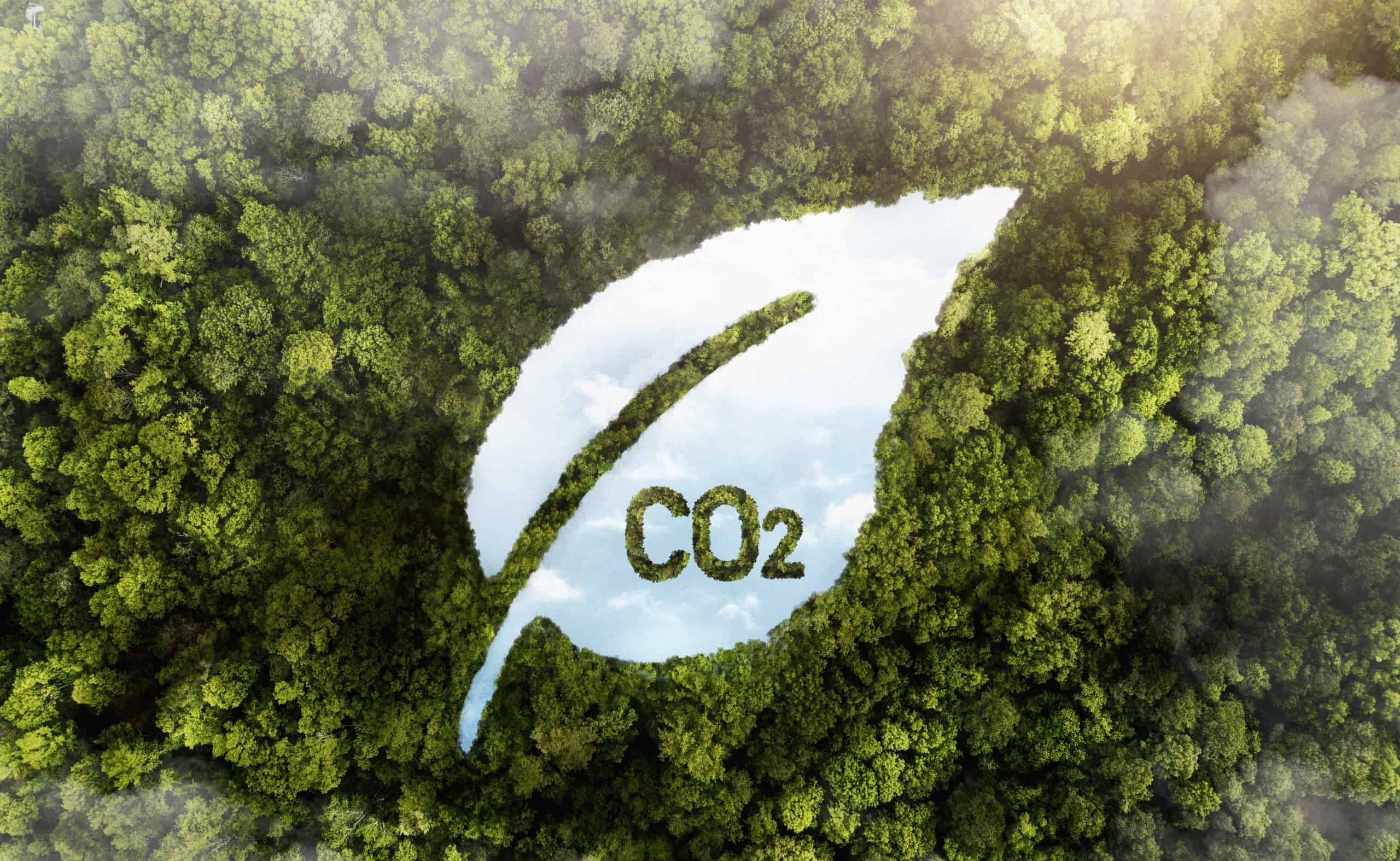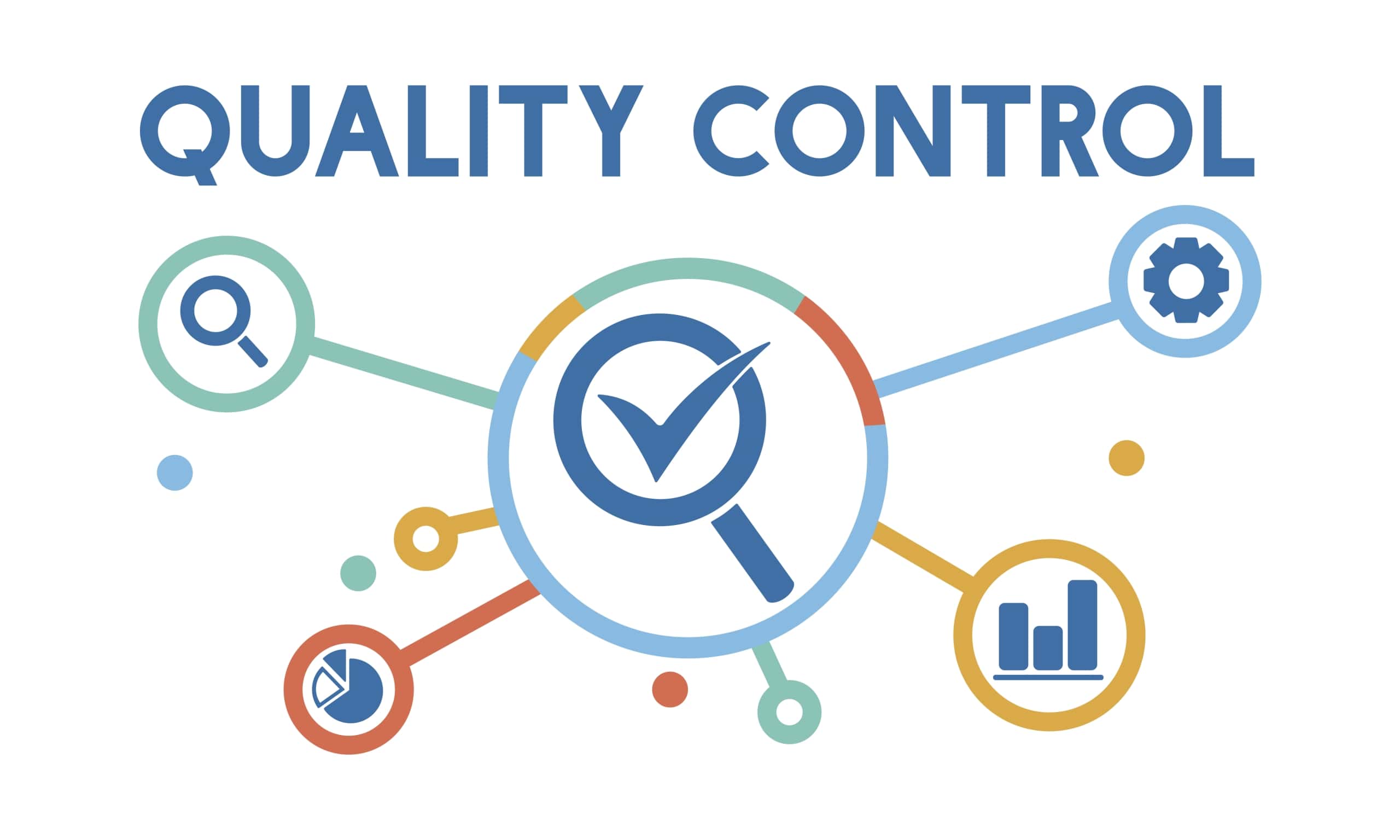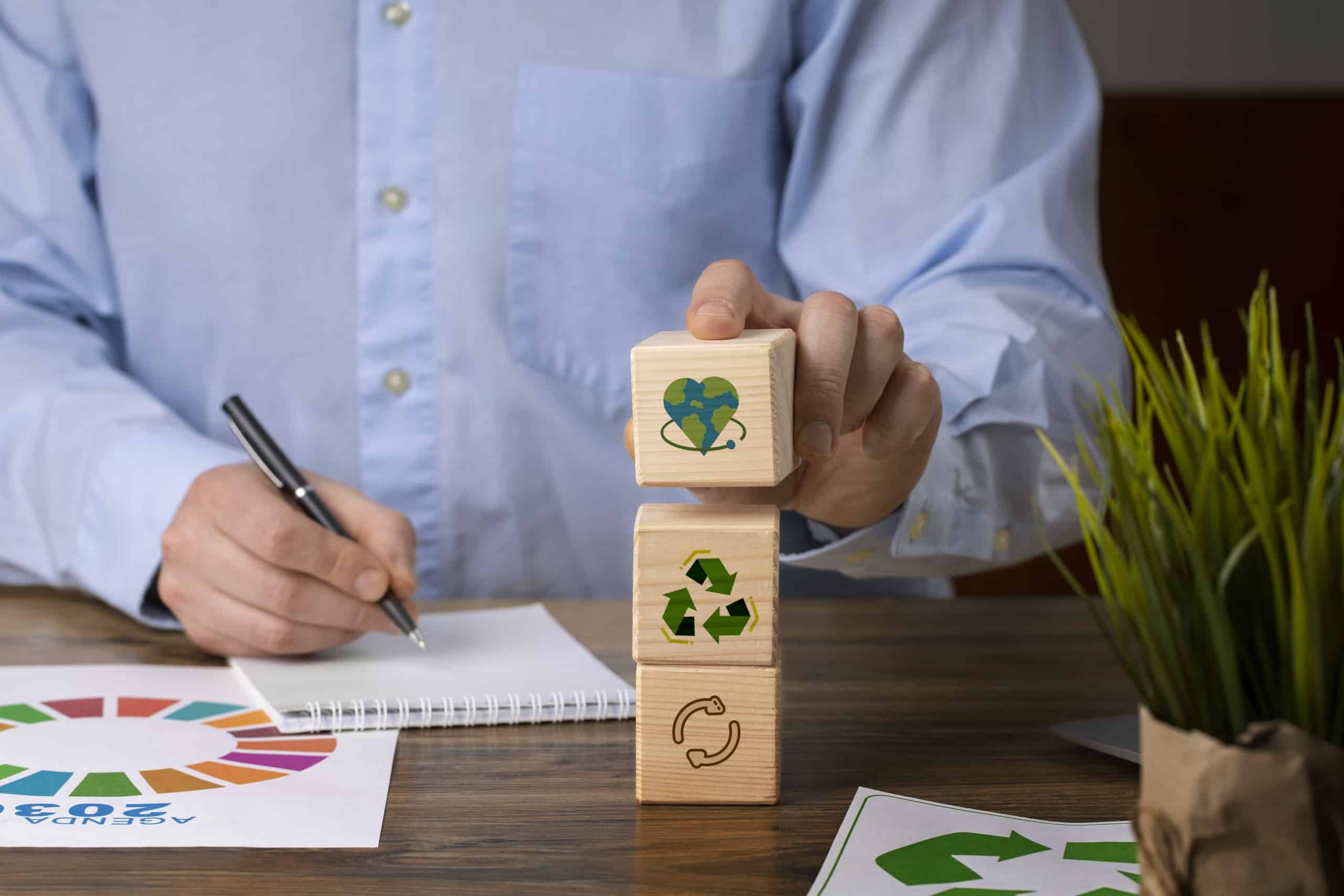1. Adopt Renewable Energy for Production
One of the best strategies for wet wipes manufacturers to lessen their carbon footprint is to switch to renewable energy. Conventional energy sources such as coal and natural gas mostly cause greenhouse gas emissions. By using renewable energy sources like hydropower, wind, and solar, manufacturers may lessen their total environmental impact and drastically reduce their dependency on fossil fuels.
Wet wipes manufacturers frequently decide to install solar panels on the rooftops of their factories. This technology lessens reliance on external power networks by enabling manufacturing facilities to generate renewable energy on-site. Solar energy systems also offer long-term cost-effectiveness and little maintenance. Another practical choice is wind energy, especially for establishments situated in areas with regular wind patterns. Wet wipes manufacturers who are unable to produce renewable energy on-site might choose to collaborate with nearby renewable energy suppliers.
The adoption of renewable energy has financial benefits in addition to environmental ones. Although renewable infrastructure may need a large initial investment, these costs are sometimes mitigated by long-term energy cost reductions and possible tax benefits. Furthermore, integrating green energy into manufacturing methods shows a strong commitment to sustainability, which is something that customers and business partners are beginning to respect more and more.
Wet wipes manufacturers may begin the shift smoothly by identifying locations where renewable energy can replace conventional sources through an energy audit. For instance, solar energy may be used to power energy-intensive activities like wetting and packing in the manufacturing of wet wipes during the hours of maximum sunshine. These actions guarantee that the production process continues to be effective while actively promoting environmental sustainability.
Using renewable energy is an investment in the company’s and the environment’s future, not merely a step toward sustainability.
2. Optimize Water Usage in Production Lines
Water is essential to the production of wet wipes because it keeps the cloth moist and cleans the equipment. But in addition to putting a burden on natural resources, excessive water use also raises operating expenses. One effective and realistic strategy for businesses to lessen their environmental impact and increase productivity is to optimize water use in manufacturing lines.
Installing closed-loop water recycling systems is one such tactic. The amount of freshwater required is greatly reduced by these systems, which treat and reuse water throughout the manufacturing cycle. Water used to moisten fabrics, for example, may be filtered, cleaned, and recycled back into the process. This method guarantees effective water use without sacrificing product quality. Wet wipes manufacturers can comply with increasingly strict environmental requirements and save treatment costs by minimizing wastewater outflow.
Water efficiency initiatives may be further strengthened by sophisticated monitoring systems driven by AI. These systems measure water flow, find leaks, and pinpoint regions of excessive consumption in real time using sensors. Manufacturers may promptly fix inefficiencies and stop needless water waste with the use of this data. AI-driven systems, for instance, may automatically modify water pressure and volume following production needs, guaranteeing that only the required quantity of water is used at every step.
Another creative idea is to use dry cleaning methods for equipment upkeep. Dry-cleaning technology, including air jets or specialized cleaning compounds, can accomplish the same outcomes with less water than traditional cleaning procedures, which need significant amounts of water. Additionally, water distribution may be optimized throughout the wetting process by employing high-efficiency nozzles and spray systems, guaranteeing consistent moisture levels in wet wipes without using excessive amounts.
Finally, educating employees on water-saving techniques on a regular basis may help the company develop a sustainable culture. Workers who see the value of water optimization are more likely to embrace environmentally friendly practices, such as quickly repairing leaks or using less water while maintaining and cleaning machines.
Reducing expenses is only one benefit of optimizing water use in manufacturing lines; another is proving environmental responsibility and securing the company’s future. Wet wipes manufacturers may greatly lessen their water footprint and support international water conservation initiatives by implementing cutting-edge technologies and environmentally friendly procedures.
3. Switch to Low-Emission Machinery
Although machinery is essential to the production of wet wipes, conventional machinery frequently uses excessive amounts of energy and greatly increases carbon emissions. A crucial first step for businesses seeking to preserve cost-effectiveness and production efficiency while aligning their operations with environmental goals is the transition to low-emission technology.
Modern low-emission equipment is built using cutting-edge technology that maximizes energy efficiency. For example, servo-motor-driven systems minimize needless energy use during manufacturing by providing precise control over motions. Servo systems save a great deal of energy since they only turn on when necessary, in contrast to conventional motors that run constantly. Additionally, these wet wipes machines work more effectively at high speeds, allowing producers to satisfy demand without putting additional carbon dioxide into the atmosphere.
Equipment with energy recovery systems, which absorb and repurpose energy produced during operations, is another cutting-edge choice. For instance, motor heat may be recycled and used to power drying or sealing machines, among other manufacturing line components. Manufacturers may cut emissions and energy expenses by recycling energy that would otherwise be squandered.
Intelligent monitoring systems that track energy use in real time are frequently combined with low-emission devices. By offering data-driven insights, these technologies assist wet wipes manufacturers in locating inefficiencies and enhancing machine efficiency. Wet wipes manufacturers can, for instance, modify machine settings to reduce power use during off-peak or idle hours by examining trends of energy consumption. Decreasing wear and tear, not only reduces emissions but also increases the machinery’s lifespan.
There are further indirect advantages of switching to low-emission equipment. Modern machinery is usually made to process a greater variety of materials, including eco-friendly and biodegradable ones, without sacrificing output quality or speed. This adaptability strengthens a manufacturer’s position in the market by enabling them to expand their product lines and meet the rising demand for environmentally friendly wet wipes.
While the initial investment in low-emission machinery may be significant, the long-term benefits outweigh the costs. Wet wipes manufacturers can gain from possible tax breaks and government funding for using sustainable technology in addition to lower energy costs. Furthermore, demonstrating the usage of low-emission equipment in marketing efforts can draw in eco-aware customers and business associates, giving you a competitive advantage in the marketplace.
Both the environment and manufacturers benefit from the use of low-emission equipment. These devices open the door to a more environmentally friendly and productive wet wipes manufacturing industry by cutting energy consumption, and emissions, and promoting sustainable production.
4. Source Raw Materials Locally
For wet wipes manufacturers looking to lessen their carbon footprint, sourcing raw materials locally is a useful and effective tactic. Since long-distance material transportation greatly increases greenhouse gas emissions, local sourcing is essential to sustainable operations. Local sourcing might have logistical and financial benefits in addition to environmental ones.
Reducing emissions from transportation is one of the main environmental advantages of sourcing locally. Raw materials are frequently shipped from far-off places using a variety of transportation methods, such as trucks, ships, and airplanes—all of which use fossil fuels. Wet wipes manufacturers may reduce the environmental effects of their supply chain and save fuel costs and carbon emissions by collaborating with local suppliers. Shorter transportation routes cut down on delivery times and lower the possibility of delays brought on by long-distance freight problems or customs clearance, which further simplifies operations.
By cultivating connections with local companies and suppliers, local sourcing also boosts regional economies. This cooperative strategy builds a mutually beneficial environment and improves the local community. For instance, by purchasing packaging materials or biodegradable fibers from local producers, firms not only lower emissions but also support the expansion of environmentally friendly companies in their area.
Improved transparency and quality control are further benefits. Because local suppliers are frequently easier to reach, wet wipes manufacturers may carry out routine inspections, guarantee moral behavior, and confirm the sustainability of raw materials. When sourcing environmentally friendly materials, such as bamboo or organic cotton, this degree of control is especially helpful since it allows producers to verify that the products fulfill environmental certifications and regulations.
Additionally, local sourcing enables producers to react to shifting consumer demands faster. For example, depending on distant suppliers might result in major delays during supply chain breakdowns or material shortages. On the other hand, local vendors may frequently offer more flexibility and quicker turnaround times, guaranteeing continuous manufacturing.
Wet wipes manufacturers should assess their current supply chains and find resources that can be sourced locally without sacrificing quality to optimize the advantages of local sourcing. Working together with local farmers’ cooperatives or producers of sustainable materials might lead to new creative possibilities. A maker of wet wipes, for instance, would collaborate with a nearby supplier to create a special combination of plant-based fibers, which would lessen dependency on synthetic materials while providing customers with a unique product.
Smaller economies of scale may make local sourcing seem more expensive at first, but over time, the savings in logistics and transportation frequently offset the costs. Additionally, using locally sourced materials as a selling feature might appeal to environmentally concerned customers, who are more interested in companies that value sustainability and community service.
To sum up, obtaining raw materials locally is a calculated decision that enhances corporate operations and the environment. Wet wipes manufacturers may create a more sustainable and competitive future by lowering emissions, strengthening the resilience of their supply chains, and boosting local economies.
5. Implement Digital Twin Technology
The manufacturing sector is changing because of digital twin technology, which gives wet wipes manufacturers a creative approach to cut carbon emissions while streamlining processes. Wet wipes manufacturers may simulate, evaluate, and improve production workflows in real time without interfering with actual operations by using digital twins, which are virtual copies of physical processes, machines, or systems. Wet wipes manufacturers may find inefficiencies, reduce resource waste, and improve sustainability by incorporating this technology.
The capacity of digital twin technology to model and forecast production results is among its most important advantages. Wet wipes manufacturers may test changes in the virtual environment before physically altering a manufacturing line, examining the effects of changes on material usage, energy consumption, and overall efficiency. A maker of wet wipes, for example, might ensure compatibility with current equipment without spending money on real-world testing by simulating the effects of utilizing a new biodegradable substance using a digital twin.
Additionally, digital twins are essential to predictive maintenance, a tactic that minimizes energy loss and downtime. The digital twin uses real-time data collected by sensors integrated into machinery to predict possible equipment faults or inefficiencies. Wet wipes manufacturers may prolong the life of machinery and avoid energy-intensive failures by resolving problems before they become more serious. This proactive strategy decreases maintenance expenses in addition to emissions.
Optimizing energy consumption throughout the production process is an additional benefit. Digital twins are able to pinpoint energy-intensive phases and recommend changes to increase productivity. For instance, the technology may show that during peak hours, a certain step in the manufacturing of wet wipes, such as cutting or moistening the cloth, uses more electricity than necessary. With this knowledge, wet wipes manufacturers may change machine settings or reschedule work to use less energy without sacrificing productivity.
Enhancing the sustainability of the supply chain is another benefit of using digital twins. Wet wipes manufacturers can evaluate the environmental effect of various sourcing and transportation choices by simulating the supply chain. This feature enables them to choose suppliers and routes that reduce emissions, guaranteeing a more environmentally friendly supply chain.
Additionally, digital twin technology facilitates cross-team cooperation and decision-making. By interacting with the same virtual model, engineers, managers, and sustainability specialists may develop more intelligent and coordinated carbon footprint reduction methods. To ensure alignment with environmental goals, sustainability teams, for instance, might collaborate with production managers to evaluate novel energy-saving or environmentally friendly manufacturing processes.
Despite the seemingly high initial cost of digital twin technology, the long-term advantages much exceed the disadvantages. Wet wipes manufacturers may fulfill sustainability standards and save a lot of money by cutting waste, optimizing resources, and avoiding expensive downtime. A company’s reputation as an industry pioneer is also improved by implementing cutting-edge technology like digital twins, which appeal to both environmentally aware customers and progressive investors.
In conclusion, wet wipes manufacturers may get a more efficient and sustainable production process with the use of digital twin technology. Through resource optimization, preventative maintenance, and simulation of real-world situations, this technology provides a potent instrument for cutting carbon emissions and opening the door to more environmentally friendly production methods.
6. Transition to Plant-Based or Biodegradable Materials
A revolutionary step for wet wipes manufacturers hoping to lessen their environmental effects and satisfy the rising demand for sustainable products is switching to plant-based or biodegradable ingredients. Conventional wet wipes frequently include polyester and other synthetic fibers, which are made from petroleum and take decades to decompose in landfills. Wet wipes manufacturers may appeal to environmentally sensitive consumers and drastically reduce their carbon footprint by using biodegradable materials derived from natural sources.
Wood pulp, cotton, bamboo, and other plant-based materials are great substitutes for synthetic fibers. In addition to being renewable, these materials break down organically in the environment, producing very little waste. Bamboo, for example, grows quickly and doesn’t need pesticides or water, making it a perfect sustainable resource. Bamboo fiber wet wipes are soft and long-lasting, providing the same degree of performance as conventional wipes but with a lower environmental impact.
The problem of microplastics, a result of synthetic wet wipes decomposing in the environment, is also addressed by the use of biodegradable materials. Wet wipes manufacturers can save ecosystems and marine life by converting them to natural fibers and preventing the discharge of dangerous microplastics into waterways. This change is in line with growing laws that prohibit or limit the use of non-biodegradable materials in consumer goods in many nations.
However, wet wipes manufacturers may need to change their gear to include biodegradable materials in manufacturing processes. Conventional machinery is frequently set up to work with synthetic fibers, which differ from their plant-based counterparts in terms of their characteristics. Purchasing adaptable equipment that can effectively process biodegradable materials guarantees that the production process will continue to run smoothly and economically. Furthermore, cutting-edge technology may maximize these materials’ utilization while reducing waste during assembly and cutting.
Offering biodegradable wet wipes enables producers to reach a constantly expanding market group that places a high value on sustainability. Emphasizing the use of biodegradable materials in marketing campaigns and product packaging may help a company stand out in a crowded market by developing a distinctive selling proposition. For example, stating that a product is “100% biodegradable” or “made from renewable resources” might draw in eco-aware consumers who are prepared to spend more on sustainable items.
Innovation is also made possible by the switch to biodegradable materials. To improve product performance, wet wipes manufacturers can experiment with hybrid materials that blend plant-based fibers with additional environmentally beneficial ingredients. For instance, aloe vera extracts and bamboo fibers may be combined to make wipes that are mild on the skin, hydrating, and biodegradable.
Purchasing biodegradable materials may initially cost more than synthetic alternatives, but in the long run, the advantages exceed the costs. The total worth of this shift is influenced by less environmental effects, adherence to more stringent rules, and improved brand reputation. Furthermore, economies of scale are anticipated to gradually reduce the cost of biodegradable materials as demand for them rises.
To sum up, switching to plant-based or biodegradable ingredients is essential to producing wet wipes in a sustainable manner. Wet wipes manufacturers may lower their carbon footprint, save the environment, and establish themselves as market leaders in the expanding eco-friendly product sector by implementing renewable resources, modernizing their equipment, and using sustainability as a primary marketing tactic.
7. Reduce Packaging Waste
Although packaging is essential for keeping wet wipes safe and fresh, it also adds a substantial amount of garbage to the environment. During manufacture and disposal, excessive and non-recyclable packaging materials are a significant source of pollution. In addition to lessening their carbon footprint, wet wipes manufacturers may satisfy consumer desire for eco-friendly and simple designs by cutting down on packaging waste.
Adopting minimalist package designs is one of the best strategies to cut down on packaging waste. Manufacturing companies may utilize less material while maintaining product protection by getting rid of superfluous layers, ornamental components, and large packaging. For example, using small, streamlined pouches rather than large plastic containers will drastically cut down on shipping volume and material use, which would lessen transportation-related emissions.
Making the switch to environmentally friendly packaging materials is another tactic. Compostable paper, recyclable plastics, or biodegradable films can be used in place of conventional non-recyclable materials. Packaging composed of plant-based materials, such as cornstarch or sugarcane fibers, for instance, is ecologically benign and offers the same functionality as traditional plastic. Because these materials decompose organically, there is less long-term trash buildup in landfills and the ocean.
As a sustainable alternative, refillable packaging choices are likewise becoming more and more popular. Wet wipes manufacturers can provide bigger, resealable refill packs that consumers can use to refill smaller, reusable containers rather than single-use packets of wet wipes. This strategy reduces the need for extra packaging while enticing customers to take up more environmentally friendly practices. A family-friendly wet wipes company may, for instance, start selling bulk refill packages, which could save packaging waste by as much as 60%.
Waste reduction can also be aided by innovative design. Resealable closures or dispensers that may be used as storage units are examples of cleverly designed packaging that has several uses. This can prolong the container’s lifespan and reduce the need for additional items. This lessens the environmental impact of single-use products while also improving customer convenience.
Wet wipes manufacturers should do a lifetime study of their packaging to guarantee efficient waste reduction. This entails assessing how materials affect the environment at every stage, from procurement to disposal. Wet wipes manufacturers may improve sustainability by making data-driven decisions by determining the phases at which waste can be reduced. A lifecycle study, for example, may show that using lighter materials can lower transportation emissions and production energy use.
Equally crucial is educating customers on how to properly dispose of packing materials. Customers are better able to make environmentally good decisions when packaging includes clear directions for recycling or composting. The environmental advantages of sustainable packaging can be increased by working with neighborhood recycling initiatives or providing take-back programs.
The transition to less packaging waste may require initial research and development expenditures, but there are significant long-term benefits. Sustainable packaging lowers waste management expenses, conforms with expanding environmental standards, and reflects customer preferences. Additionally, showcasing these initiatives in advertising campaigns may establish a company as a sustainability leader in the sector, drawing in eco-aware clients and enhancing brand loyalty.
To sum up, cutting packaging waste is a crucial first step in producing wet wipes in a sustainable manner. Wet wipes manufacturers may reduce their environmental effects and improve their competitiveness in the market by implementing eco-friendly materials, refillable choices, creative packaging solutions, and minimalist designs.
8. Leverage Carbon Accounting Software
A potent instrument for measuring, tracking, and managing greenhouse gas (GHG) emissions throughout the industrial process is carbon accounting software. By using this technology, wet wipes manufacturers may gain important insights into high-emission locations and make well-informed decisions to lower their carbon footprint and support sustainability objectives.
The capacity of carbon accounting software to offer a thorough picture of emissions is one of its main advantages. Indirect emissions from energy use, direct emissions from wet wipes manufacturing processes, and even supply chain-integrated emissions like transportation and raw material procurement are included in this. Wet wipes manufacturers may identify pollution hotspots, including energy-intensive machinery or long-haul material shipments, and put targeted mitigation plans in place by evaluating this data.
Wet wipes manufacturers may also monitor their progress toward sustainability goals with the use of carbon accounting software. Businesses may assess the effects of energy-saving measures, such as upgrading to low-emission equipment or converting to renewable energy, using real-time monitoring. The program can measure the reduction in emissions that occurs, for instance, when a factory installs solar panels or switches to biodegradable materials, giving stakeholders a clear picture of their progress.
The capacity to adhere to environmental certifications and standards is another important benefit. Stricter emissions reporting regulations are being imposed by governments and trade associations more often. By automating data gathering, producing accurate reports, and guaranteeing adherence to standards such as ISO 14064 or the GHG Protocol, carbon accounting software streamlines this procedure. In addition to avoiding fines, this improves the business’s standing for openness and environmental responsibility.
Wet wipes manufacturers can also find ways to save costs by using carbon accounting software. Emissions are frequently linked to inefficiencies like overproduction or energy waste. These inefficiencies may be brought to light by the software, allowing wet wipes manufacturers to take remedial measures that lower emissions and operating expenses. For example, shifting machine usage schedules to off-peak times can save pollutants and power use.
Additionally, the program is quite helpful for supply chain optimization. Wet wipes manufacturers frequently depend on several raw material suppliers, many of whom may have unique emissions profiles. Wet wipes manufacturers may select more sustainable partners by using carbon accounting technologies to assess each supplier’s environmental effect. For instance, collaborating with a nearby supplier that uses renewable energy can lower emissions related to material manufacturing and transportation.
Software for carbon accounting also facilitates communication with stakeholders, like as investors, customers, and government agencies. Companies may show their dedication to sustainability by sharing comprehensive emissions data, which can draw in eco-aware investors and clients. To improve their brand image in the cutthroat wet wipes industry, wet wipes manufacturers may also utilize the findings to create sustainability reports or marketing campaigns that showcase their efforts to cut emissions.
Although there may be an initial training and technological expenditure needed to use carbon accounting software, there are significant long-term benefits. Even small and medium-sized enterprises may successfully use these technologies thanks to the scalable solutions that many software providers provide, which are customized to meet the unique demands of wet wipes manufacturers.
To sum up, carbon accounting software is a crucial tool for wet wipes manufacturers looking to cut emissions, boost productivity, and fulfill sustainability goals. This technology enables firms to take the lead in sustainable manufacturing while fostering trust with stakeholders and customers by revealing cost-saving options, automating compliance, and offering actionable information.
9. Engage in Carbon Offset Programs
Although the ultimate objective is to reduce emissions at the source, certain emissions are inevitable during the manufacture of wet wipes. By funding environmental initiatives that eliminate or stop an equivalent quantity of carbon dioxide from entering the atmosphere, carbon offset programs give producers an efficient means of offsetting these emissions. Participating in such initiatives helps the company meet customer expectations and global sustainability trends while also reducing its negative effects on the environment.
Comprehending Carbon Offsets: A carbon offset is a reduction in greenhouse gas emissions brought about by renewable energy projects, methane collection systems, or tree planting. Wet wipes manufacturers may offset their carbon impact by purchasing these offsets. A plant that emits 1,000 tons of CO₂ a year, for instance, can compensate for these emissions by supporting carbon-sequestering programs.
The capacity of carbon offset programs to make up for emissions that are difficult to eliminate is one of its main advantages. Emissions from manufacturing processes such as material production, machinery operation, and transportation might be difficult to completely eradicate. Wet wipes manufacturers may accept accountability for these emissions while developing long-term reduction plans thanks to offsets.
Participating in carbon offset initiatives may help improve a manufacturer’s reputation. Consumers of today are more likely to support companies that practice environmental responsibility. Brand loyalty and eco-conscious consumers can be increased by emphasizing involvement in certified offset programs on product packaging or marketing materials, such as a “Carbon Neutral Certified” logo. For example, parents searching for environmentally friendly baby items may be drawn to a wet wipes business that backs reforestation initiatives.
Wet wipes manufacturers may match their investments with their brand values thanks to the variety of offset choices available to them. For instance:
- Reforestation Projects: Trees that absorb CO2 from the atmosphere are planted as part of reforestation projects. Endorsing such initiatives shows a dedication to stopping deforestation and advancing biodiversity.
- Renewable Energy Projects: Wet wipes manufacturers may lessen the world’s dependency on fossil fuels by contributing to wind, solar, or hydroelectric power projects.
- Community-Based Projects: Initiatives that give impoverished areas solar panels or clean cooking stoves lower emissions while enhancing local standards of living.
Wet wipes manufacturers should make sure they collaborate with reliable and validated suppliers to optimize the effects of carbon offset programs. Organizations like the Gold Standard, Verified Carbon Standard (VCS), or Climate Action Reserve offer certified offsets that meet stringent criteria for transparency and effectiveness. These certificates guarantee that the initiatives provide tangible, quantifiable, and extra environmental benefits.
By including offsets in their sustainability strategy, firms may also be proactive. Instead of viewing offsets as a standalone solution, companies can combine them with emission reduction strategies, such as switching to renewable energy or adopting low-emission machinery. For example, a wet wipes manufacturer might aim to achieve net-zero emissions by cutting operational emissions in half and offsetting the remainder through certified programs.
Participation in carbon offset programs also facilitates engagement with stakeholders, including investors, regulators, and customers. Companies with strong sustainability policies are often given preference by investors and offset programs offer verifiable proof of environmental dedication. Regulatory bodies may also recognize offsets as part of compliance with emissions reduction targets, offering additional incentives.
While offsets cannot replace efforts to reduce emissions directly, they serve as an important bridge toward long-term sustainability goals. By taking responsibility for their carbon footprint through offset programs, wet wipes manufacturers can contribute to global climate action while positioning themselves as leaders in eco-friendly manufacturing.
In conclusion, engaging in carbon offset programs is a meaningful way for wet wipes manufacturers to address residual emissions, demonstrate environmental responsibility, and enhance brand appeal. When combined with proactive reduction measures, offsets can help manufacturers achieve a balanced approach to sustainability, ensuring a greener future for both the industry and the planet.
10. Educate and Train Employees
A key component of any successful sustainability program, including initiatives to lessen the carbon footprint in the production of wet wipes, is staff education and training. Since workers are the backbone of industrial processes, equipping them with the right information and abilities may increase the effect of green practices at every organizational level. Long-term success is fueled by an environmentally conscious culture that is fostered when employees see the value of sustainability and are prepared to participate.
Increasing awareness of the organization’s sustainability objectives is the first step in developing a successful education and training program. Employees must comprehend the importance of lowering the carbon footprint for the company’s reputation, financial savings, and contributions to environmental health worldwide, in addition to regulatory compliance. Workshops, seminars, or simply straightforward instructional sessions that outline the link between production processes and carbon emissions can do this. Infographics and case studies are examples of visual aids that may help make the material more interesting and relatable.
Practical instruction is just as crucial. For instance, workers on manufacturing lines can receive training on how to properly operate energy-efficient equipment, guaranteeing peak performance while consuming the least amount of energy. Maintenance crews can learn how to find and address inefficiencies that directly lead to increased emissions, including leaks or energy waste. Offering such focused training gives staff members the confidence they need to embrace new procedures or technology that promotes sustainability.
Companies should encourage a sense of personal accountability and empowerment in addition to technical training. Promoting eco-friendly behaviors among staff members, such as recycling materials, reporting inefficiencies, or turning off equipment during downtime, can result in little but significant benefits over time. Gamification can encourage staff members to actively participate in sustainability programs by providing incentives for teams that achieve the most waste or energy reduction.
Teaching workers about sustainable practices outside of the manufacturing floor may also make a big difference. To lessen their influence on the environment, office workers should be urged to use digital tools, carpool, or use less paper. Cross-departmental cooperation, in which engineering or sustainability specialists collaborate with manufacturing teams, might result in creative solutions that further cut emissions.
To keep the momentum going, regular praise and comments are essential. Workers must see that their efforts are having an impact. The importance of their efforts is reaffirmed when success stories are shared, such as waste or energy savings attained via their initiatives. Programs for recognizing people or groups who succeed in putting sustainable principles into practice generate a positive feedback loop that inspires others to do the same.
Last but not least, continuing education is necessary to stay current with changing laws and technology. Wet wipes manufacturers can collaborate with government organizations, non-profits, or industry professionals to offer advanced training on subjects including waste reduction, carbon accounting, and the integration of renewable energy. Employees are kept up to date on the newest trends and best practices by being encouraged to attend sustainability conferences or webinars.
Wet wipes manufacturers can develop a staff that is not just competent but also fervently dedicated to accomplishing sustainability objectives by investing in employee education and training. Employees who are empowered become change agents who foster innovation and instill environmental responsibility in the company’s ethos.
To sum up, one of the most important ways to lower carbon footprints in the production of wet wipes is to educate and train staff. A knowledgeable, involved staff can precisely apply green practices, cultivate an accountable culture, and assist the company in reaching its sustainability goals while making a positive impact on the environment.











